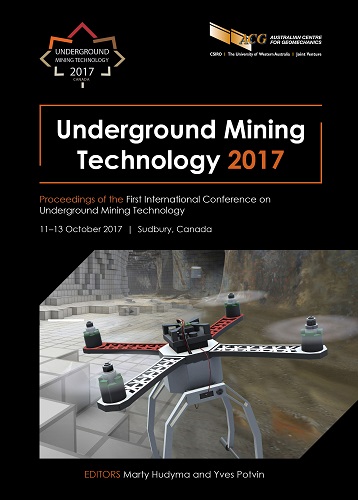Mine schedule optimisation with ventilation constraints: a case study

|
Authors: Zhang, H; Hauta, R; Fava, L |
DOI https://doi.org/10.36487/ACG_rep/1710_11_Zhang
Cite As:
Zhang, H, Hauta, R & Fava, L 2017, 'Mine schedule optimisation with ventilation constraints: a case study', in M Hudyma & Y Potvin (eds), UMT 2017: Proceedings of the First International Conference on Underground Mining Technology, Australian Centre for Geomechanics, Perth, pp. 145-152, https://doi.org/10.36487/ACG_rep/1710_11_Zhang
Abstract:
This paper describes a process for optimising mine schedules with ventilation constraints using the Schedule Optimization Tool (SOT), the Ventilation Constraint Module (VCM) and a ventilation network solver (Ventsim). The VCM was developed as a component of MIRARCO’s SOT+ research project. Proper ventilation is critical for underground mines to operate safely, yet it is often not adequately considered early in the mine planning cycle. The need to account for ventilation early in the long-term planning cycle motivated the development of the VCM. The VCM generates constraints on the schedule of mining activities for each zone and for each stage of the mine life, based on available airflows. These constraints are intended to ensure that a mine schedule will be feasible from a ventilation perspective. Adhering to these ventilationbased constraints, as well as other constraints related to the project, SOT maximises the net present value (NPV) of the long-term schedule. The VCM will also assist the user in identifying opportunities to redistribute the airflow in the mine in ways that support higher-NPV schedules. A case study for a hypothetical underground mine will be presented, showing that the VCM supports the generation of optimised life-of-mine schedules that adhere to realistic ventilation constraints.
Keywords: mine schedule optimisation, ventilation, Ventilation Constraint Module, Schedule Optimization Tool, mine planning
References:
Allen, CL & Tran, TT 2011, ‘Ventilation-On-Demand control system’s impact on energy savings and air quality’, Proceedings of the CIM Conference 2011, Canadian Institute of Mining, Metallurgy and Petroleum, Westmount.
Chasm Consulting 2016, Ventsim Visual User Guide, Chasm Consulting, Capabala.
Deswik Mining Consultants (Australia) Pty Ltd 2014, Deswik.CAD, Deswik Mining Consultants (Australia) Pty Ltd, Brisbane.
Fava, L, Saavedra-Rosas, J, Tough, V & Haarala, P 2013, ‘Heuristic optimisation of scheduling scenarios for achieving strategic mine planning targets’, Proceedings of the 23rd World Mining Congress, Canadian Institute of Mining, Metallurgy and Petroleum, Westmount.
Hardcastle, S, Kocsis, C & Lacroix, R 2007, ‘Strategic mine ventilation control: A source of potential energy savings’, Proceedings of the CIM Conference 2007, Canadian Institute of Mining, Metallurgy and Petroleum, Westmount, pp. 255–263.
Widzyk-Capehart, E & Watson, B 2001, ‘Agnew gold mine expansion, mine ventilation evaluation using Ventsim’, in S Wasilewski (ed.), Proceedings of the 7th International Mine Ventilation Congress, Research & Development Center for Electrical Engineering and Automation in Mining, Krakow, pp. 345–352.
© Copyright 2025, Australian Centre for Geomechanics (ACG), The University of Western Australia. All rights reserved.
View copyright/legal information
Please direct any queries or error reports to repository-acg@uwa.edu.au
View copyright/legal information
Please direct any queries or error reports to repository-acg@uwa.edu.au